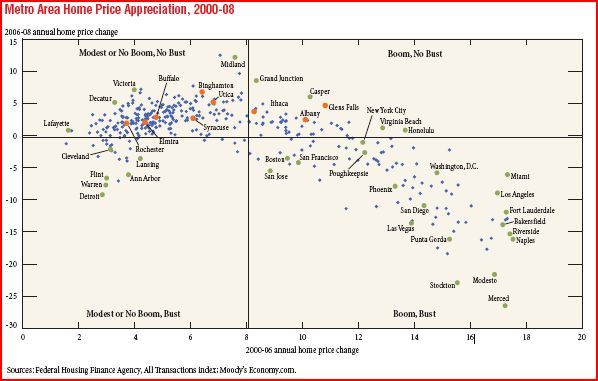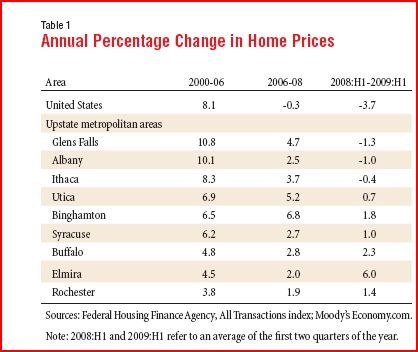From the extremes of generosity springs the extremes of stupid borrower behavior. Several Extreme Makeover Home Edition families are facing foreclosure because of their HELOC abuse.

Irvine Home Address … 18 SUNSET Riv Irvine, CA 92604
Resale Home Price …… $669,000
{book1}
Extreme ways they help me
They help me out late at night
Extreme places I had gone
That never seen any light
Dirty basements, dirty noise
Dirty places coming through
Extreme worlds alone
Did you ever like it planned?
I would stand in line for this
There's always room in life for this
Oh baby, oh baby
Then it fell apart, it fell apart
Moby — Extreme Ways
The show Extreme Makeover Home Edition helps families coming from difficult circumstances have a new life. The extreme examples they choose make for interesting drama, and I have found myself watching this show and rejoicing with the happy families. Watching the show makes you feel good; it leaves you believing that good people can come together and make a real difference for those who would otherwise struggle mightily.
There is a fine line between extreme joy and extreme anger and sadness. When you see people who have been given so much waste it irresponsibly, the intense joy becomes something very different. I find it difficult to contain my anger when I read stories like these. How do people who were given so much do something so stupid? Like the stories of lottery winners who go bankrupt, people can experience a change in circumstances without fundamentally changing who and what they are.
A video from Wall Street Journal on today's HELOC abusers.
Extreme Stories
By DAWN WOTAPKA
Some families featured on "Extreme Makeover: Home Edition" find themselves in trouble once the cameras leave town. Some struggle to pay the upkeep on their expensive new homes while others tap the equity in their homes and end up with bigger mortgages that are hard to maintain. Some seek a quick-fix by trying to sell. But because Extreme Makeovers tend to be big, fancy residences plopped in working-class or rural communities, the houses can be a hard sell. (See related article.) "Like many homeowners in the nation, Extreme Makeover: Home Edition families aren't immune to the current state of the U.S. economy," said a spokeswoman for the show. Here are five tales:
Notice how the writer is trying to put a positive spin on the inexcusable behavior of these HELOC abusers. Is she really trying to get us to believe that higher utility bills and taxes caused these people to take out hundreds of thousands of dollars in mortgage equity withdrawal? That doesn't even pass the giggle test. If we were talking about $10,000, I might understand, but these people are losing their houses in foreclosure because they spent hundreds of thousands of dollars.
Eric Hebert and Family
Following his sister's sudden death in 2004, Eric Hebert relocated to Sandpoint to raise her young twins. In an early 2006 episode of the show, the family home, described as a basement with a roof, was replaced with a multi-story house resembling a mountain lodge. Tyson Foods Inc. threw in a $50,000 check for Mr. Hebert and his family.
"We'll definitely be able to call this our home for ever and ever and ever," Mr. Hebert said when he saw his new home for the first time.
Public records show Mr. Hebert's original mortgage was for $110,000 in September 2004. In January 2006–just before the show aired–he refinanced for $250,000. About a year later, came another refinance with Wells Fargo for $382,500. A notice of default was recorded in January 2009 and the home was foreclosed on in October—the first known foreclosure in the Extreme series' history.
Mr. Hebert did not respond to multiple requests for comment.
Some local residents are angry over what became of the community project. "It's kind of like we have egg on our face," said Sydney Icardo, a realtor with Century 21 RiverStone, who cut down aspen trees used to decorate Mr. Hebert's bedroom. "It cuts deep. We're a tight community."
After being given a new house and plenty of cash, what did these people do? They spent every penny, borrowed more, then spent every penny of that. After their spending orgy, they are destitute and homeless.
Perhaps their lender will forgive their principal balance and let them do it all over again? That would be the compassionate thing to do in this circumstance; after all, they were in a tough spot with a new home, no mortgage and money in the bank back in 2006. Anyone could have failed under those circumstances… not.
The Woffords
In September of 2004, just as the real-estate bubble was heating up, an episode featuring the Wofford family, a widowed father raising eight children, showed a roughly 1,200-square-foot home replaced with a 4,337-square-foot model in Encinitas, Calif.
Brian Wofford reportedly paid $186,700 on the home in 1989. But, after tapping the equity and two additional liens, his debt had ballooned above $700,000. In 2005, OneWest Bank originated a new loan for $735,000, according to a spokeswoman.
As he faced foreclosure late last year, Mr. Wofford entered a three-month trial modification and was recently offered a permanent modification. Mr. Wofford did not return several requests for comment.
That sounds like a California debtor, doesn't it? This family spent $548,300 after a group of well-meaning people added tremendous value to their property. Like the other HELOC abusers, they took full advantage of the charity of others. You have to wonder if the people who did this hard work for them feel good about the way this family pissed away the money. I wouldn't.
The Harpers
Later in the 2004-2005 season, the Harper family's makeover in Lake City, Ga. aired, showing a modest home with septic-tank issues replaced by a 5,300-square-footer resembling an English castle.
The makeover came with a paid mortgage and scholarship fund for the children. But the Harpers used the home as collateral to fund a construction business that failed. As foreclosure loomed last March, the family filed for bankruptcy, halting the process.
The family recently sold raffle tickets via the Internet–with the home as the prize–though it's unclear if the raffle was ever held or if anyone actually won the home. A foreclosure sale is scheduled for April 6.
Do you think they took the raffle money and spent it? It wouldn't be out of character.
Notice the half-truth about starting a construction business. It is an attempt to justify enough HELOC abuse to cause them to lose their home by making this guy look like a hard-working ordinary guy who fell on hard times. How does someone lose enough money to consume the value in a 5,300 SF McMansion? If the business was struggling, wouldn't a reasonable person pull the plug before losing everything? Let's be real. These people spent their house on consumption just like everyone else.
The Okvaths
After the Harpers' show came the Okvaths. This family–daughter Kassandra was recovering from cancer–received a 5,346-square-foot home with six bedrooms, a movie theater and carousel in the backyard.
In 2006, Nichol Okvath and her husband, who lost his job as a truck driver, took out a $200,000 home-equity loan "to survive off of," says Ms. Okvath. Next came a $400,000 loan to pay off the first one and medical bills. Ms. Okvath says she hasn't made the $3,056 monthly mortgage payment since December of 2008.
The property is on the market for $599,000, slashed from $1.3 million a year ago. But there have been no offers: The area has an 18-month supply of homes in that price range and the Okvaths' Spanish-style mansion seems out of place with its modest surroundings, said Tony Moore, the Keller Williams Realty agent who is handling the listing.
Two hundred thousand dollars to live off of? If they were accustomed to living on a truck driver's earnings, they should have survived for five years or more of unemployment. I could see $20,000, but $200,000 is ridiculous.
Of course, they resorted to the "medical bills" excuse when all else fails. Didn't they have health insurance? That must be quite a large deductible.
Irvine's extreme HELOC abuse
Not to be outdone by irresponsible loan owners from other parts, Irvine residents routinely spent their homes. Today's featured property is one of many.
- This property was purchased on 6/14/1996 for $315,000. The owners used a $252,000 first mortgage and a $63,000 down payment.
- On 10/15/1998 they opened a HELOC for $50,000.
- On 7/29/1999 they refinanced their first mortgage for $300,000.
- On 11/6/2002 they refinanced again for $300,000. So far they have been trying to manage the growth of their mortgage.
- On 4/18/2003 they got a HELOC for $100,000.
- On 7/23/2004 they enlarged the HELOC to $150,000.
- On 3/28/2005 they refinanced with a $532,000 Option ARM with a 1.25% teaser rate.
- On 4/19/2005 they obtained a $80,000 HELOC.
- On 4/13/2007 they refinanced with a $637,000 first mortgage.
- On 7/20/2007 they obtained a $100,000 HELOC from Bank of America.
- Total property debt is $737,000.
- Total mortgage equity withdrawal is $485,000.
They quit paying last year.
Foreclosure Record
Recording Date: 12/31/2009
Document Type: Notice of Default

How would you grade them?
I'll give you my opinion:
Eric Hebert and Family = F. They refinanced before the show even aired.
The Woffords = F. Over $500,000 in MEW between 2004 and 2005.
The Harpers = F. Massive HELOC abuse and raffle fraud.
The Okvaths = E. $400,000 in HELOC abuse, but I don't see evidence of gaming the system. They were merely thoughtless and stupid.
Irvine abusers = E. Once they went Ponzi in 2004, it was obvious they were going to lose the house, and their spending was clearly reckless.

Irvine Home Address … 18 SUNSET Riv Irvine, CA 92604 ![]()
Resale Home Price … $669,000
Home Purchase Price … $190,000
Home Purchase Date …. 6/29/2001
Net Gain (Loss) ………. $438,860
Percent Change ………. 252.1%
Annual Appreciation … 14.2%
Cost of Ownership
————————————————-
$669,000 ………. Asking Price
$133,800 ………. 20% Down Conventional
5.24% …………… Mortgage Interest Rate
$535,200 ………. 30-Year Mortgage
$142,332 ………. Income Requirement
$2,952 ………. Monthly Mortgage Payment
$580 ………. Property Tax
$0 ………. Special Taxes and Levies (Mello Roos)
$56 ………. Homeowners Insurance
$140 ………. Homeowners Association Fees
============================================ 
$3,728 ………. Monthly Cash Outlays
-$729 ………. Tax Savings (% of Interest and Property Tax)
-$615 ………. Equity Hidden in Payment
$278 ………. Lost Income to Down Payment (net of taxes)
$84 ………. Maintenance and Replacement Reserves
============================================
$2,745 ………. Monthly Cost of Ownership
Cash Acquisition Demands
——————————————————————————
$6,690 ………. Furnishing and Move In @1%
$6,690 ………. Closing Costs @1%
$5,352 ………… Interest Points @1% of Loan
$133,800 ………. Down Payment
============================================
$152,532 ………. Total Cash Costs
$42,000 ………… Emergency Cash Reserves
============================================
$194,532 ………. Total Savings Needed
Property Details for 18 SUNSET Riv Irvine, CA 92604
——————————————————————————
Beds: 3
Baths: 3 baths
Home size: 2,580 sq ft
($259 / sq ft)
Lot Size: 7,650 sq ft
Year Built: 1976
Days on Market: 87
MLS Number: S603391
Property Type: Single Family, Residential
Community: El Camino Real
Tract: Dc
——————————————————————————
According to the listing agent, this listing may be a pre-foreclosure or short sale.
Deerfield Home in cul-de-sac. Complete with a large master bedroom and two other rooms upstairs as well as a bedroom with a full bath on the main floor. Home also has formal dining room, cathedral ceilings, and a fireplace in family room.
A second post today
This afternoon, there will be a second post. The afternoon post will be on Buying a Trustee Sale Property as a Primary Residence.













































.jpg)